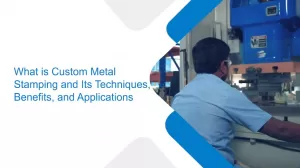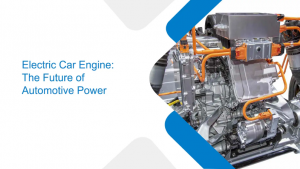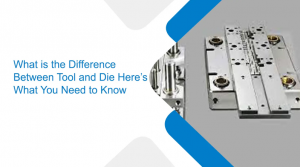Guide to Metal Stamping Production: Process, New Techniques & Advantages
- Precision Metal Stamping |
- Aug 9, 2021
The process of precision metal stamping is one in which sheet metal is transformed into various sizes and shapes depending on the requirement by means of dies which are embedded into stamping presses. Blanks-as flat sheet metal is typically called- are introduced into a stamping press that has tools and dies that transform the metal pieces into a new shape altogether depending on the requirement. Both metal fabricators and larger production companies will ultimately use pressure by employing stamping presses and produce a part or component that is required to fit into other parts or work on its own.
Approach to metal stamping– This process is capable of producing mass quantities of parts in a relatively short time. The cost incurred in the production is low while the manufacturing speed is high. Also, the components produced using precision metal stamping are accurate and precise, the quality of the produced part does not in any way go below what’s considered acceptable simply with the act of repetition.
Precision metal stamping can be carried out either for long or short-term productions. In addition, the precision metal stamping process can also be clubbed with other processes that have to do with shaping the metal in different ways.
Precision Metal Stamping Process
1. Blanking and punching
Blanking and punching are processes in which a die is used to obtain the desired shape of the material through cutting. Punching leads to boring a hole into the material and removing excess metal which is not needed for the part. Blanking involves separating the part from the sheet metal and converting it into a blank or a workpiece.
2. Coining
During coining, the part is stamped with the use of a die and a press. This process results in precise bends on the cutout metal, preventing the punched part from going back to its former shape.
3. Embossing
Embossing is done to produce an elevation or a dip in the workpiece. Roller dies or stamp dies are used for this process.
4. Bending OR Flanging
In order to shape the metal, the process of bending is used. Different shapes like U, L, or V are produced depending on the part being produced using this step. A single-axis is generally used to bring about the bend in the metal. If there are borders needed within or in the exterior of the part being produced, it is done through the process of flanging. There are dedicated flanging machines used for this process, dies can also do the job depending on the complexity of the border to be carved.
Metal Stamping Techniques
The precision metal stamping process as you can see does much more than mere engrave stamps or imprints. It carries out a variety of functions on the metal until the final product is made ready. These days, the stamping process is finely regulated and controlled using computer programs that provide a high level of accuracy in each stamped metal part.
Manufacturers make use of CAD or computer-aided programs and EDM’s or electrical discharge machines to supply a high amount of precision into the art of metal stamping process. To further add specific tones to the stamping needs, different tooling machines are used. These include carbide, progressive, compound, and forming tooling. The benefit of having progressive dies is that it allows for the production of multiple or single parts at the same time.
To carry out the stamping process, a range of different operations are put to use. One of the most widely used processes is progressive die stamping in which an array of stamping stations fixed with dies and tools relay the part from one stamping station to the other. This is a delicate process and requires extreme accuracy and precision. This process is the choice for productions with long runs and results in much lesser material wastage. Every station on the press carries out its unique function and the completed part is ready at the end of the stamping process.
The difference in the progressive and transfer die stamping process is that the part to be produced is separated from the metal strip beforehand. A conveyor belt then moves the part from one station to another where the stamping process is carried out. Larger parts that need to be transferred from one place to another use this particular type of stamping process. For complex parts with various twists and bends in them, the method of four slide stamping is used. In this process, instead of dies, slides are used to carry out essentially the same action. If more than four slides are needed to cater to the complexity of the part being produced, additional slides can be added to the press.
The presses that hold these dies and tools also come in different types. The three major types include a hydraulic, mechanical, and mechanical servo. As the name suggests, hydraulic presses employ fluids to exert the pressure required in this process while the mechanical ones use a motor to do the same thing. The mechanical servo presses use high-powered motors and are faster than hydraulic presses.
Just the stamping presses, the dies used in the stamping process are also different. There are combination dies, compound dies, progressive dies, transfer dies and steel rule dies. Each die carries out different functions and is used in different stations.
Depending on the part to be produced, the materials used in the stamping process are varied. Apart from metals, plastic, paper, leather, and even rubber can be used in the stamping process.
Advantages of the Metal Stamping Process
- There are several advantages of the stamping process. Using technology and computers, parts with a high level of precision and accuracy can be produced using the stamping process.
- Additionally, each part that is produced is accurate and precise and does not differ in quality, despite the numerous times the process is repeated.
- The amount of wastage in this process is also minimal resulting in cheaper production.
- Large scale productions of metal parts are done using the metal stamping process as doing these individuals can be very time-consuming and expensive, requiring a lot of manual labor.
- There will also be many human errors involved in manual production and the accuracy and precision of every part will not be the same like that produced by machines. Since the time taken to produce parts is relatively shorter, companies can manufacture products with great speed. The time taken to produce the parts and assemble them is short and products reach the markets and into consumers hands in a matter of a few days to weeks depending on the product being produced. This particular advantage makes stamping process the favorite in the field of metal production.
- At Eigen, we understand the time constraints of manufacturing companies and hence are geared to deliver the meet their high production speeds with state of the art machinery and the best brains in the field. Our engineers carefully engineer dies and tools to serve your purpose while our high-end machines backed up by superior technology do the rest. Satisfaction and speed- both are offered by us. We have been in the stamping process for decades and possess valuable experience in producing challenging and unique parts for various companies.
Ujjwal handles crucial roles like AGM Marketing, researcher, and is an author for KDDL – Eigen. He currently works with Eigen for implementing proven techniques and strategies for marketing plans on online and offline platforms. An expert in efficiently executing SEO, SEM, email marketing, social media marketing, PR marketing, Print campaigns, etc. Ujjwal has coordinated an efficient marketing team on various creative campaigns and programmatic buying to support various digital cross-promotion efforts. Implement efficient search optimization strategies with the help of collateral material and metrics.
In his former years, Ujjwal has years of experience in a managerial role for several reputed companies. His years of experience combined with the flair of writing help him come up with result oriented strategies for Eigen.




